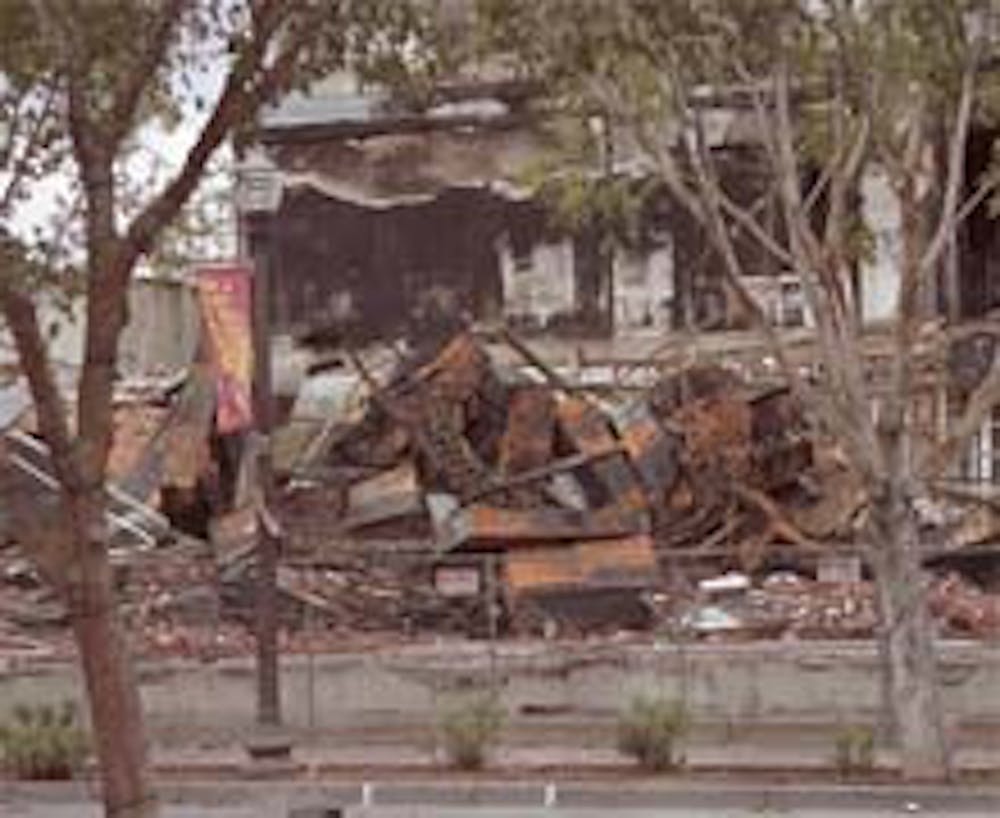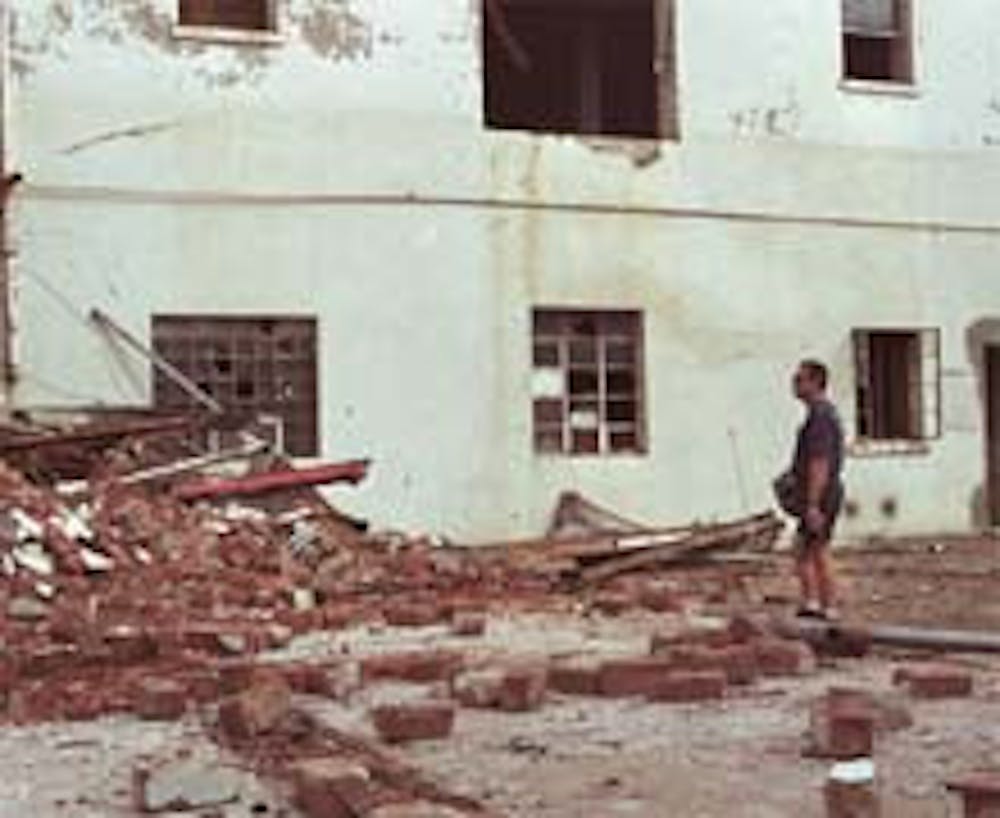Tempe fire officials suspect arsonists started the blaze Tuesday that scorched a Tempe historical landmark, the Hayden Flour Mill.
The mill, located on the southwest corner of Mill Avenue and Rio Salado Parkway, is comprised of three sections. Fire struck the west-facing middle section, the part closest to Mill Avenue. The mill's silo, which can be seen from ASU, was not damaged.
The structure is unoccupied and has no electricity, and no lightning strikes have recently occurred, leading officials to suspect arson, according to Tempe Fire Chief Cliff Jones.
A witness reported seeing two teens running from the building after the fire began around 2 p.m., according to the fire department.
"Obviously I believe it's suspicious because people saw the two teens running away, but we haven't been able to determine the cause," said Sgt. Dan Masters of the Tempe Police.
John Akers, curator of history for the Tempe Historical Museum, said he suspected arson because of past problems at the flourmill.
"There has been a problem of transients around the site," he said. "It has been a long-time concern."
Developer MCW Holdings owns the flourmill. Company officials did not return phone calls.
The Tempe City Council has been working with MCW Holdings to renovate the abandoned mill into a "mixed-use facility" — much like the Brickyard on Mill — that will incorporate offices, commercial and residential apartments.
The renovation is planned to maintain the historic look of the mill's grain tower, according to Akers.
City Councilman Dennis Cahill said the fire has not deterred plans to renovate.
"It looks to me like nothing will be changed," he said. "The parts that were [burned] were planned on being taken down already."
Charles T. Hayden, who is generally regarded as the founder of Tempe, first built the flourmill in 1874.
Two previous fires, in 1900 and 1917, devastated Hayden's original structure; valley contractor J. C. Steele rebuilt the present structure in 1918.
The flourmill remained in use until 1997, making it the longest continuously used industrial site in the Valley.
Akers said the damage to the structure, which is Mill Avenue's namesake, is disappointing.
"The mill was a reminder of how Tempe started," Akers said. "Tempe would be a different city and have a completely different main street if the mill had never been there."
Reach the reporter at megan.rudebeck@excite.com.





